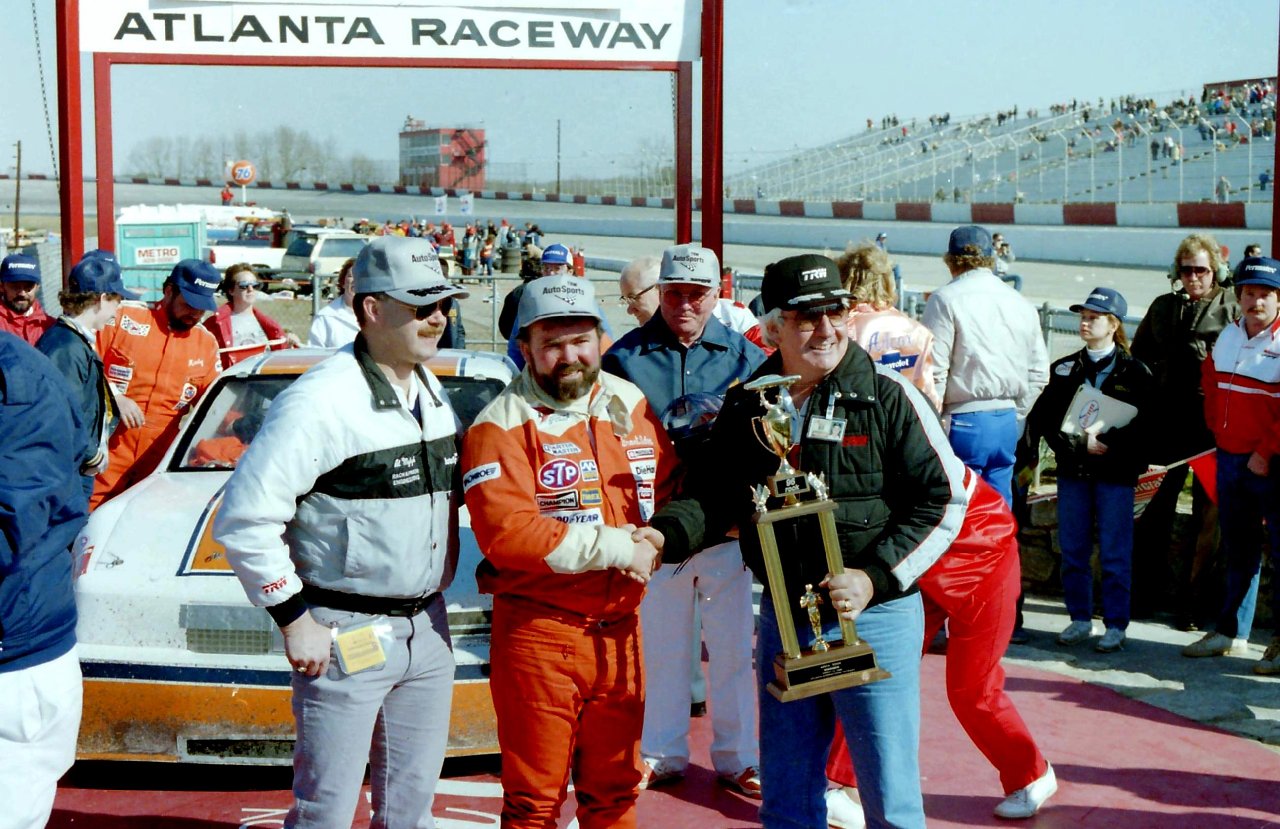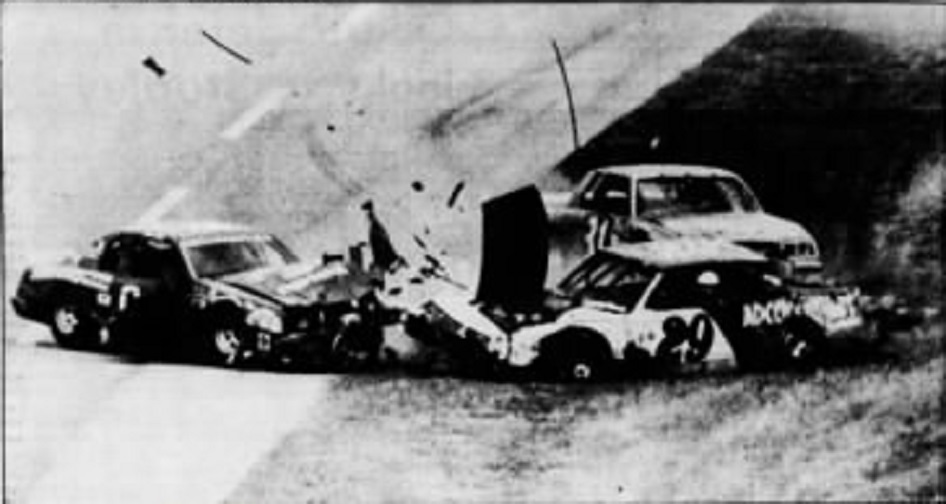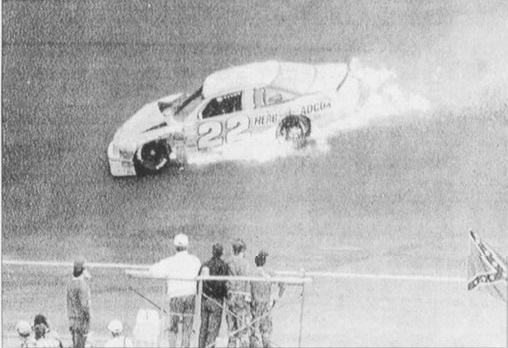A racing veteran, who had endured many hardships and pressed on regardless, and whose sportsmanship continues to be known even years after his violent fatal accident. Today we take a look at Grant Adcox.

Born in January 1950, Herb Grant Adcox, who went by his middle name, was a frequent face at the Kingsport Speedway and Smoky Mountain Speedway in his younger years and began to venture into the Winston Cup Series in 1974. The highest echelon of American motorsport was still very accessible to local short trackers in 1974, when Earl Ross surprised everyone with a victory at Martinsville, and Adcox, the son of a successful Chevrolet dealer, took advantage of it. Adcox quickly made the headlines, however it wasn’t for the seasons he would have wanted.
After failing to qualify for the Daytona 500 that year, Adcox debuted at the 1974 Rockingham spring race, where he finished midfield. After failing to finish his second start at Atlanta, Adcox took to the track again at Talladega that May. During the race, Adcox lost control of his car while pulling onto pit road and spun in a wide arc before crashing into the car of Gary Bettenhausen, the race leader at the time. The crash injured several of Bettenhausen’s crewmen, including Don Miller of St. Louis, who had his right leg pinned between the pit wall and Bettenhausen’s AMC Matador. Miller’s leg was amputated afterwards. Adcox himself was bruised and in shock, but otherwise fine, and Bettenhausen was unhurt.
In 1975, yet another tragedy struck Adcox during Talladega festivities. Cotton Lovell, a former crewman for Friday Hassler, had only recently returned to racing as a part-time worker after stepping away when Hassler died. While working on Adcox’s car, Lovell suffered a massive heart attack and died on the spot. In response, Adcox, who was going to start 20th, withdrew from the race and returned home to Tennessee without a second thought or comment, leading to the first alternate being bumped into the race. The race was then promptly rained out and rescheduled for August 17, one week after the original race date.
Who the first alternate was is difficult to confirm, several sources identifying them as Earl Brooks and Jabe Thomas. Legend says it was Tiny Lund. Whoever it was, they were one of two racers who hadn’t been scheduled to race. Donnie Allison was also penciled into the field. He replaced A.J. Foyt, who chose to race in an Indycar race at Milwaukee instead.
By NASCAR rule, Adcox was not permitted to re-enter his team into the Talladega 500, but was permitted, if he so chose, to hop in someone else’s car. He did just that, making a deal with Tom Williams of Texas, who was lined up 37th, and getting behind the wheel of Williams’ car. The race itself was marred by a vicious crash on the backstretch which killed Lund. Legend often says Lund was the first alternate and wouldn’t have raced if Adcox hadn’t withdrawn, however it appears he actually qualified for the race in time trials and had every intention of racing.

After an unimpressive next couple years and a few seasons away from racing, including a rather heavy hit during a race at Talladega in 1983, Adcox, apparently realizing that the days of running up front in an independently funded car were over, stepped down to ARCA. His best finish had been 5th at Talladega in 1978, but racing was simply getting too expensive, and teams were funding their cars with seven-digit paychecks. He swiftly found success in ARCA, in which teams could still be run on a shoestring budget. He ran part time in 1986, but won four races, including the ARCA Daytona 200, which he won after Bill Venturini blew a tire on the last lap. In fact, Adcox was such an expert of the superspeedways that he was often called the “King of the Superspeedways”, in fact winning four straight Talladega races in 1986 and 1987. He then ran full time in ARCA the next two years, winning several more times, before scaling back to part-time in 1989 so the Adcox Racing Team could reallocate some money towards a few Winston Cup races. In an interview with the Chattanooga Times in Summer 1988, Adcox explained this move as him giving his run at the big leagues another shot. He acknowledged that his team was poorly funded, but the Adcox Racing Team, comprised of his family and close friends, were close and all loved what they did.
On November 19, 1989, Adcox took to the track at the Atlanta Motor Speedway for his third Cup start of the year. He had successfully timed his way into the field, qualifying 38th. The #22 Oldsmobile Cutlass, sponsored by Herb Adcox Chevrolet, wasn’t particularly quick, but he was able to keep decent pace, and stayed out of the way of the leaders. On lap 203, Adcox was five laps off the pace and racing with Jim Sauter when his car went straight on into turn one. Bystanders blamed this on a blown tire. Pete Card, Adcox’s crew chief, said he had heard that Sauter had dipped down the track and clipped Adcox’s right front, cutting said tire. Sauter, however, emphasized his spotter had seen the incident begin and had explained to the team that Adcox had lost a tire and failed to turn, clipping Sauter in the left rear in the process. A Goodyear representative stated it wasn’t a tire failure at all and blamed it on a mechanical failure. In any case, Adcox’s car slammed into the wall, passenger door first, at near-full speed.

After skidding along the wall, the orange-white car, painted orange due to a favorite sports team, descended the track in front of traffic, not hitting anything else, and coming to rest at the bottom of turn two. When rescuers arrived and saw how badly the car was damaged and the condition Adcox was in, they pulled out the Jaws of Life and extricated the driver by opening the car’s roof. After his car had been removed, the race resumed and was won by Dale Earnhardt. Rusty Wallace, finishing 15th, was declared the driver’s champion.
Grant Adcox, 39, was pronounced dead shortly after arrival to the hospital of massive head and chest injuries. He had also suffered a heart attack, likely on impact with the wall. The hit into the wall caused Adcox’s seat to break, turning it sideways and facing the passenger-side window. The rear end housing was also moved over about a foot and a half. It had truly been a violent hit.
Adcox’s legacy continues today, however. To this day, ARCA’s sportsmanship award is called the H.G. Adcox Sportsmanship Award, a name adopted in 1990. The award was presented by his father, Herb Adcox, between 1990 and 2014. The elder Adcox, who continued to operate his dealership until he closed it in 2010, passed away in June 2015 at the age of 86. However, his legacy, and with it his son’s, continue on at the annual ARCA Awards ceremony in December.
Sources:
“Virginia Driver Wins Permatex”, Kingsport News, September 15, 1970
“Close Call…Pearson edges Parsons for Alabama 500 win”, The Courier-Journal, May 6, 1974
“Green Flag Never Waves”, The High Point Enterprise, August 11, 1975
Motorsport Memorial
“Heavy rains force restart of Talladega 500”, The Anniston Star, August 11, 1975
“Fiery crash claims Adcox”, The Atlanta Journal, November 20, 1989
“Bad memory ends NASCAR season”, Calgary Herald, November 21, 1989
“A grim racing lesson”, Ft. Lauderdale Herald, November 21, 1989
